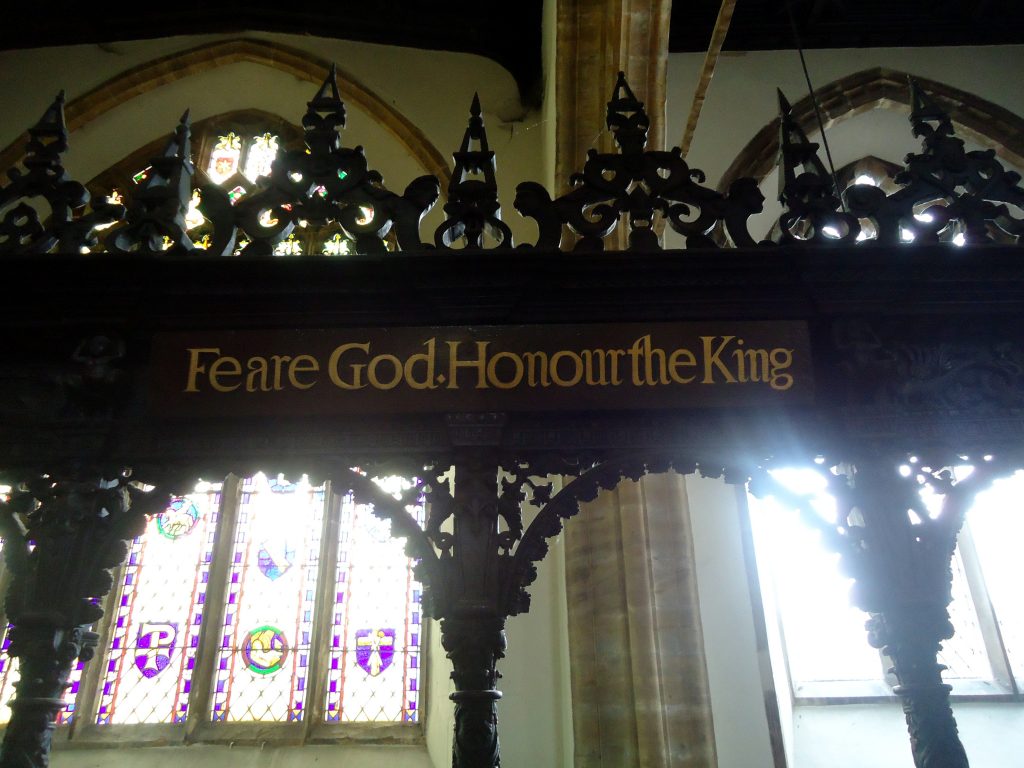
The ‘Corporation Pews’ were originally a screen outwith the older rood screen which divided the chancel from the nave. They dated to either the Tudor or Jacobean periods, representing a post-Reformation re-ordering of the medieval church. The screen was moved during the major Victorian ‘restoration’ of the church in 1849 and were used to mark the Corporation Chapel, where the Town Council would sit during service.
With the move there were some panels left over, and these were turned into a sideboard. In turn, these panels were recycled in the 1930s, when the sideboard was dismantled, and were incorporated into the sanctuary at the church at Northmoor Green, whose vicar had been a curate at Saint Mary’s.
In the nineteenth century the rich carvings were often studied by London architects and craftsmen as good exemplars of Tudor/Jacobean carving. Jarman, writing in 1885, lamented the new location of the pews due to the ‘indifferent light in which they were placed’. This certainly makes photographing them difficult.
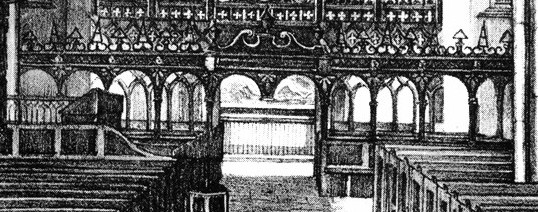
Two watercolours of the chancel arch area are in Exeter City Library made by the Devon architect Edward Ashworth (1814 – 1896) showing before and after views of the work. This view of from the North Transept. At the front are the doored box pews of the Nave, then to the left the Gallery of the North Chapel. Then is the side view of the Corporation Screen, and in the distance the South Transept Gallery.
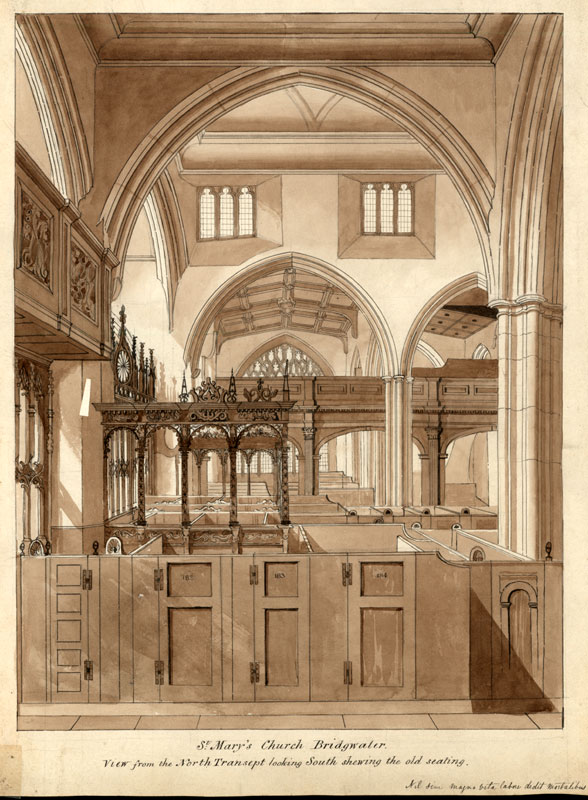

By permission the South West Heritage Trust: West Country Studies Library, Exeter.
Ref: P&D15001
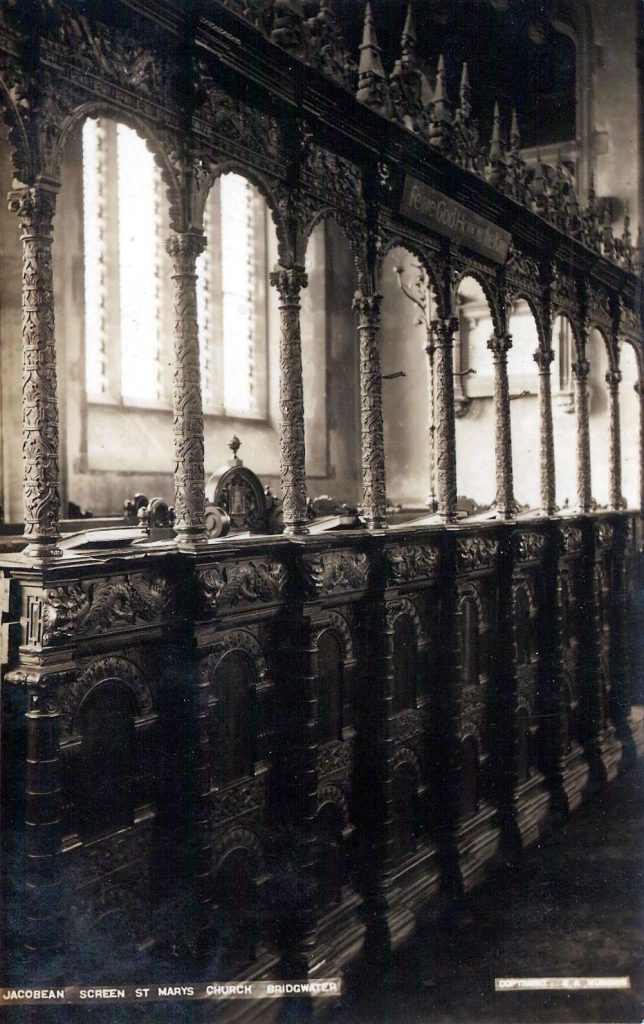
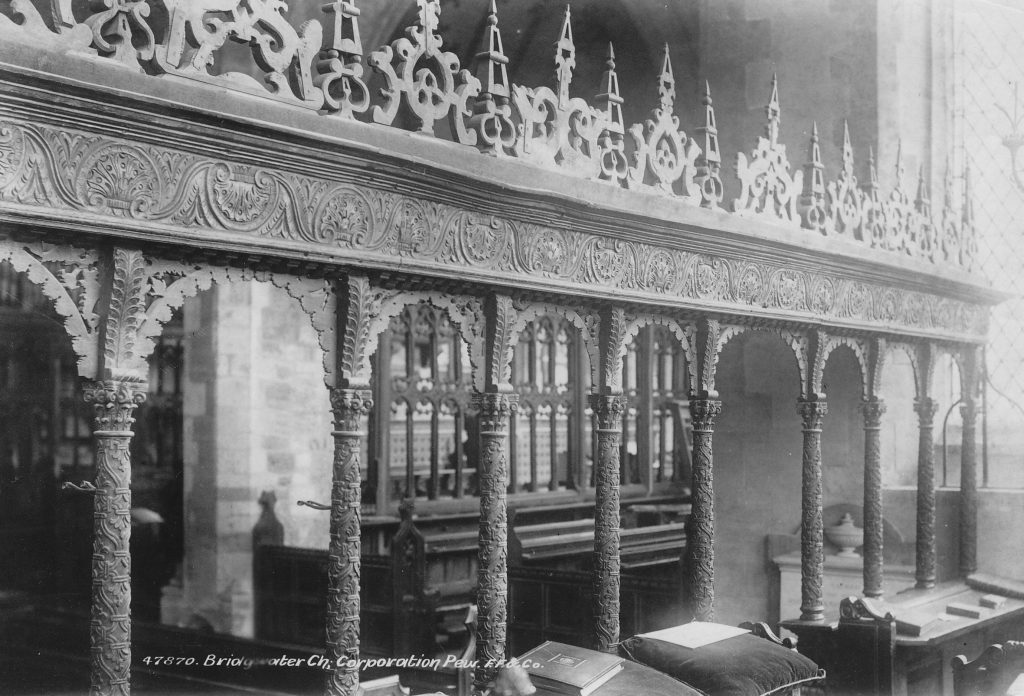
The Heads
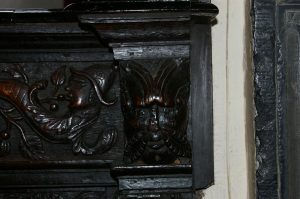
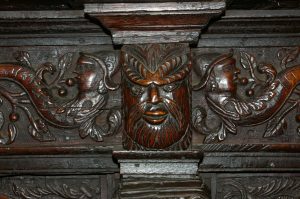
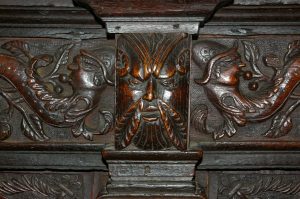
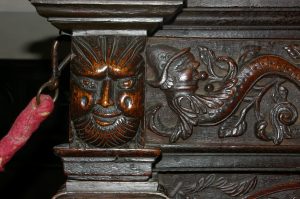
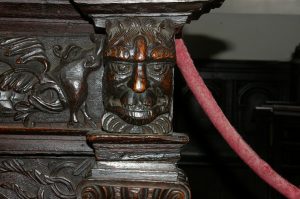
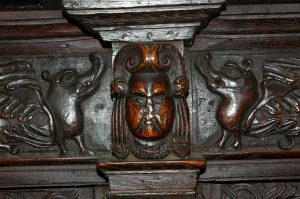
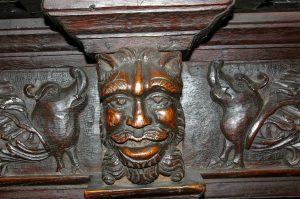
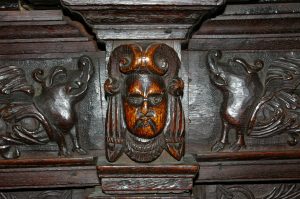

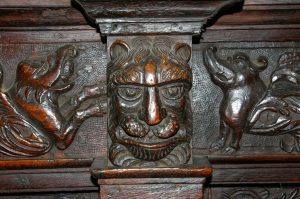
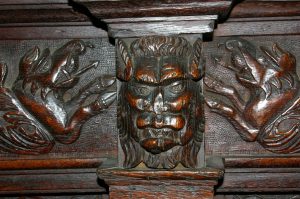
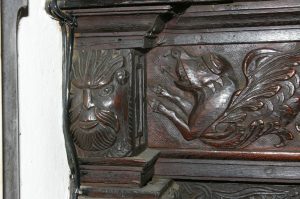
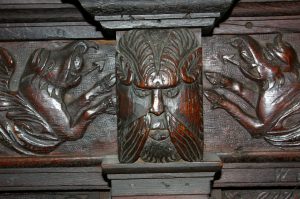
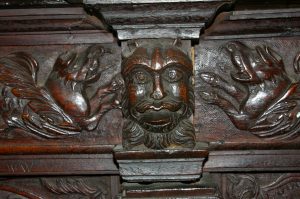
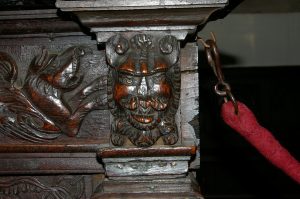
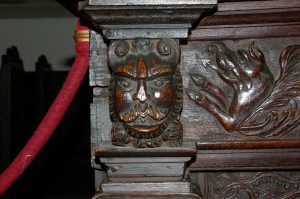
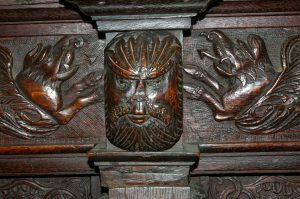
Additional Carvings
Pictures kindly supplied by Richard Philpott
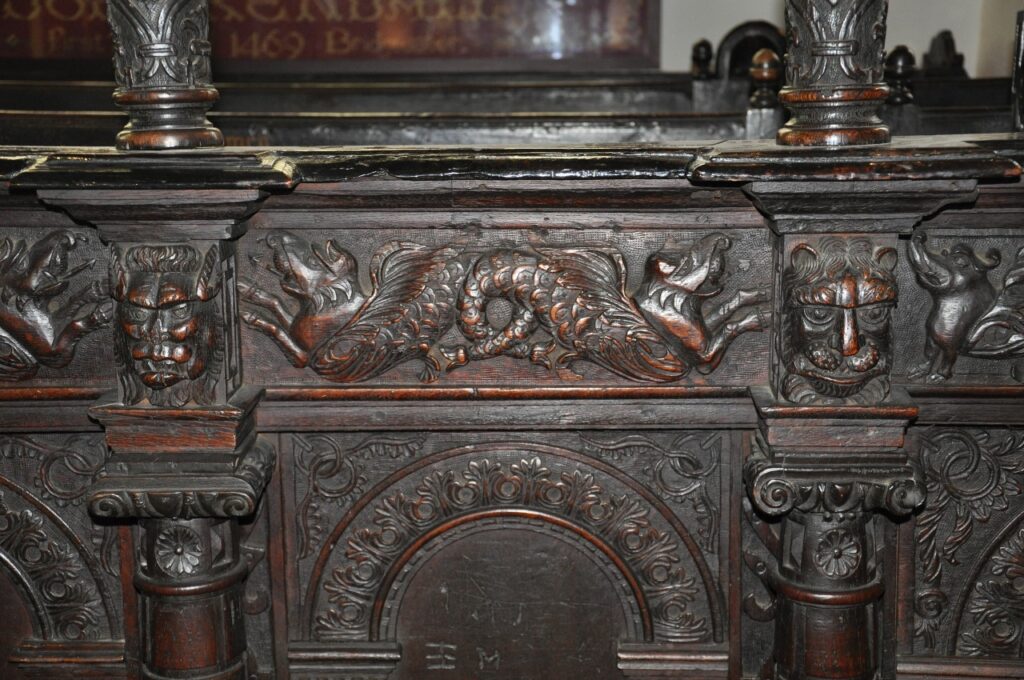
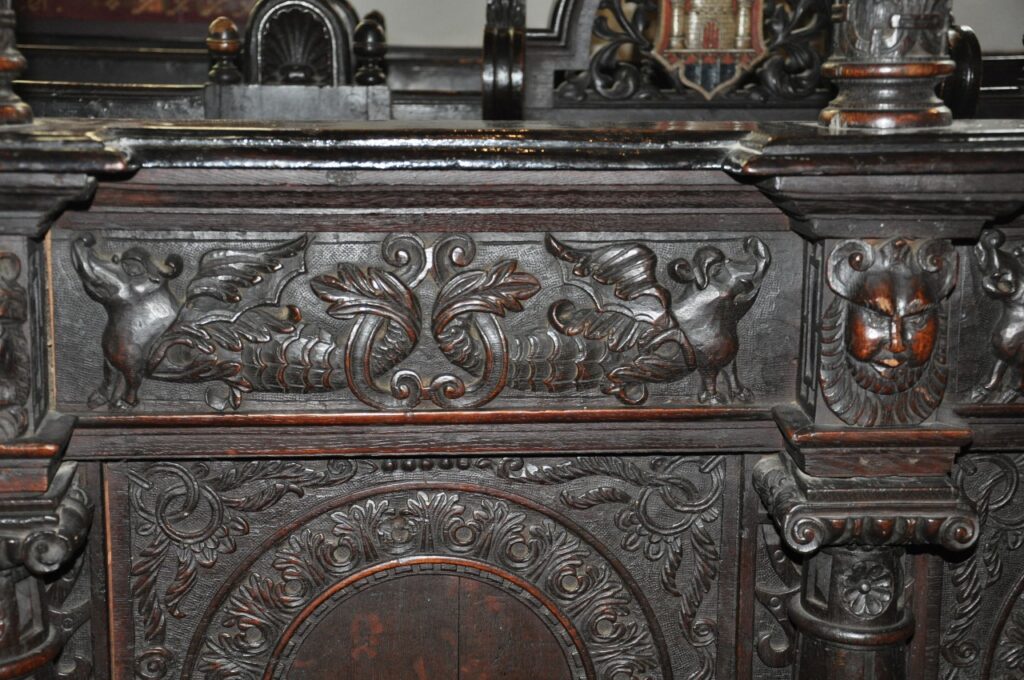
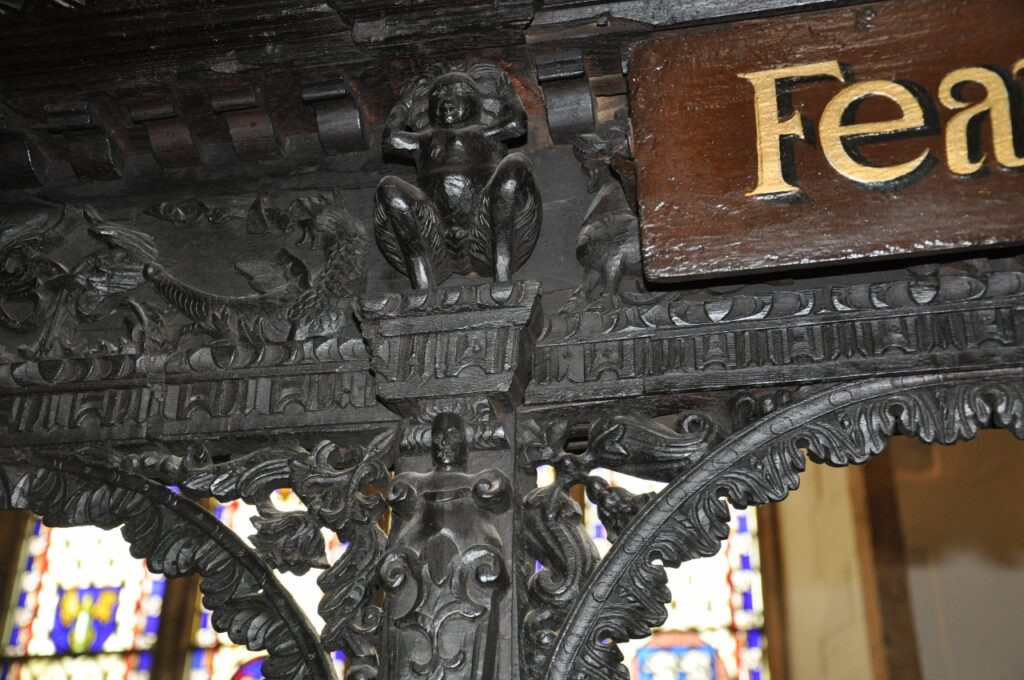
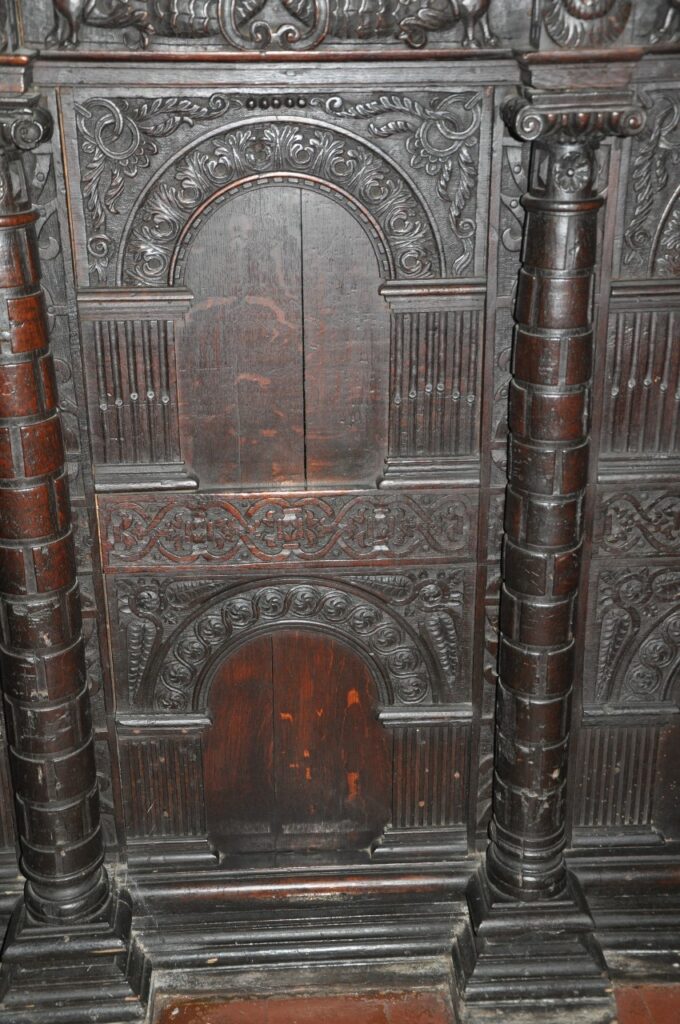
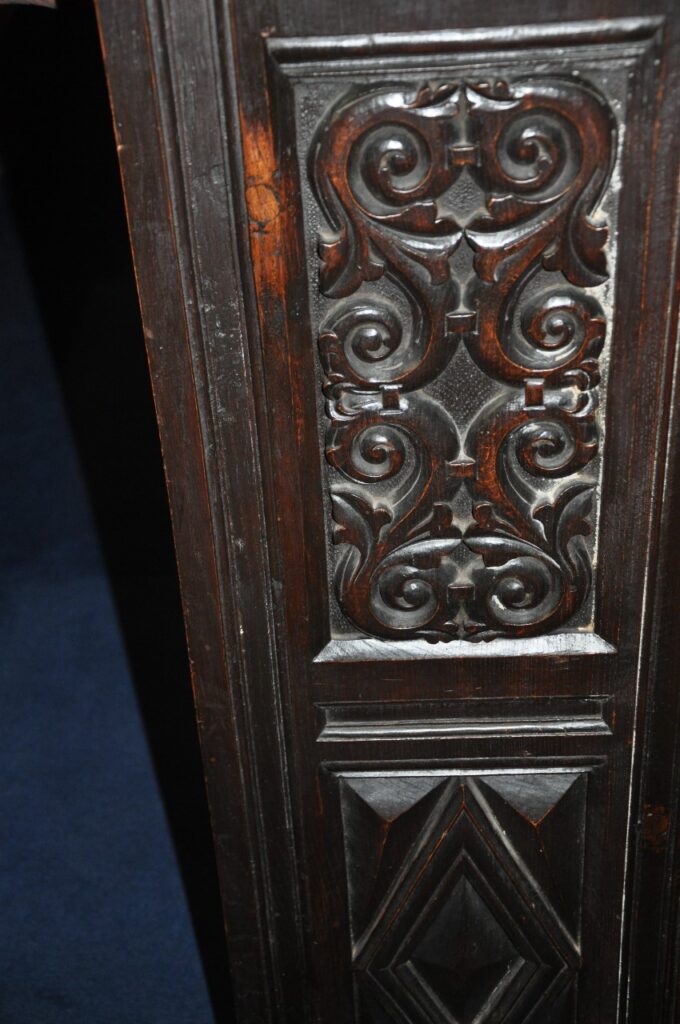
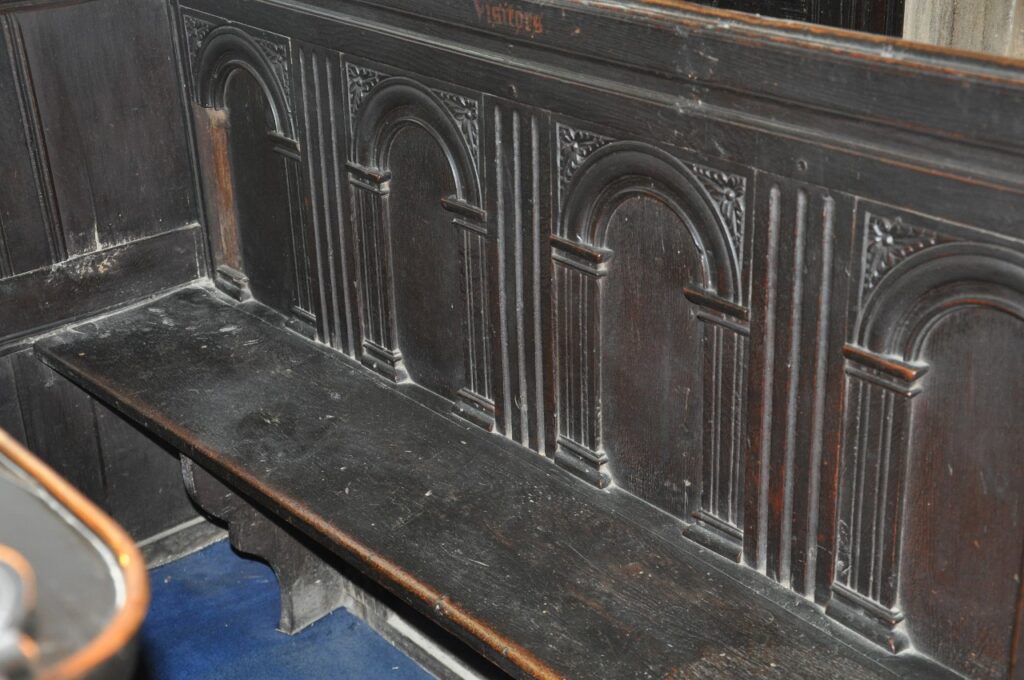
Offcuts at St Peter & St John, Northmoor Green
Pictures kindly supplied by Sue Sayer
Four of the Corportion Pews’ pillars can be found at Moorland, two incorporated into the Sanctuary Table, two more turned into candlesticks. It is unclear how many other panels from the screen found its way here and have been subsequently removed.
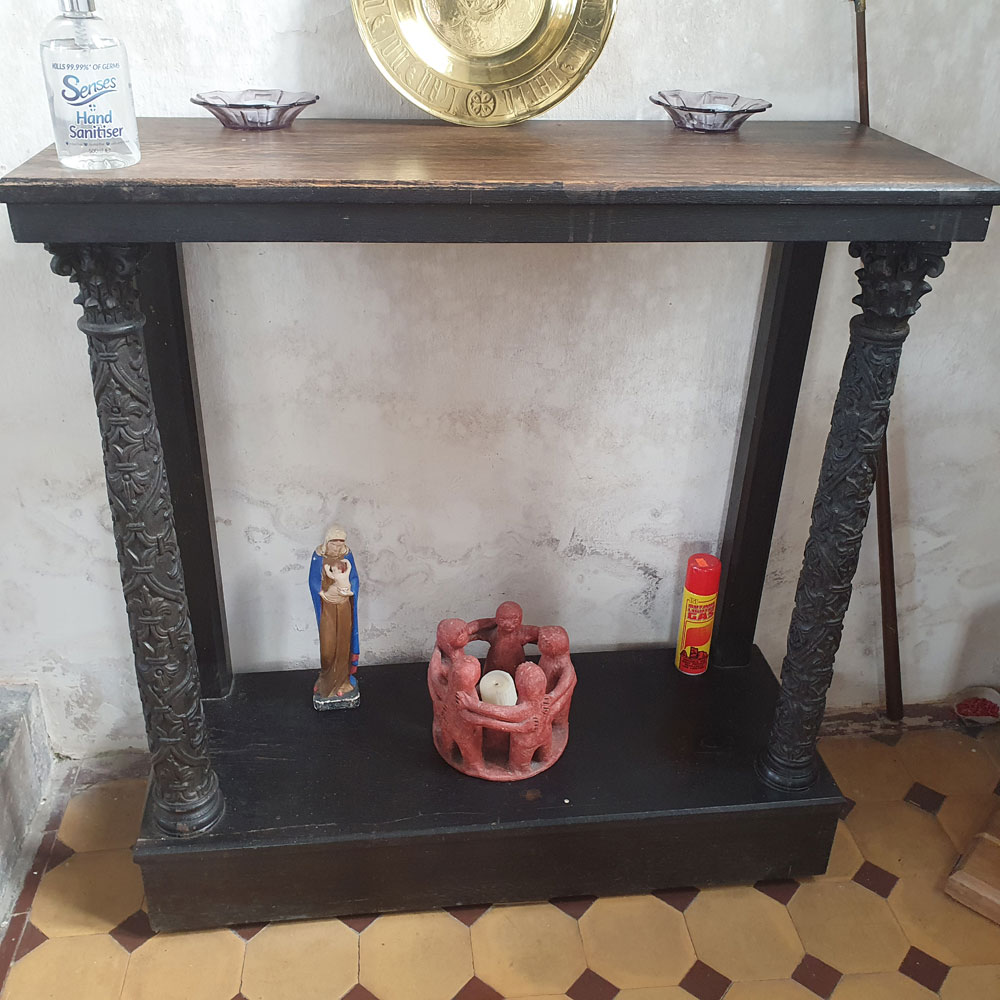
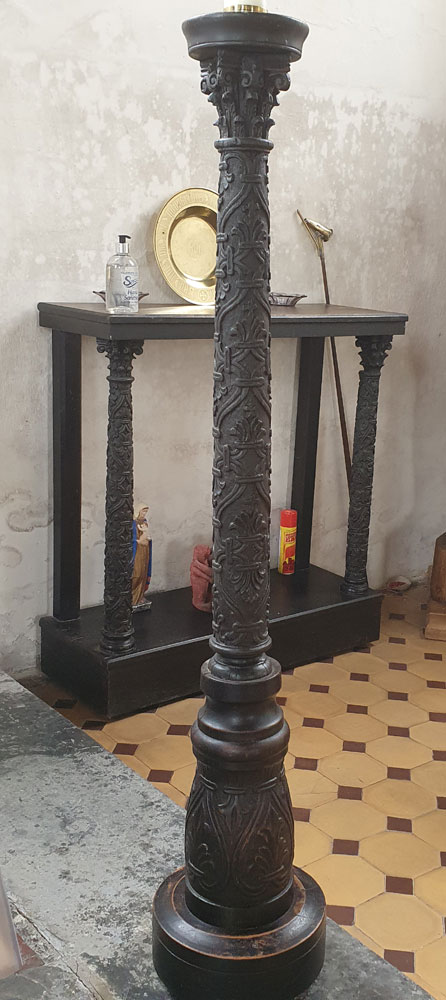
Links
Susan Orlik, The Bridgwater Corporation Pew c.1620, 2019
